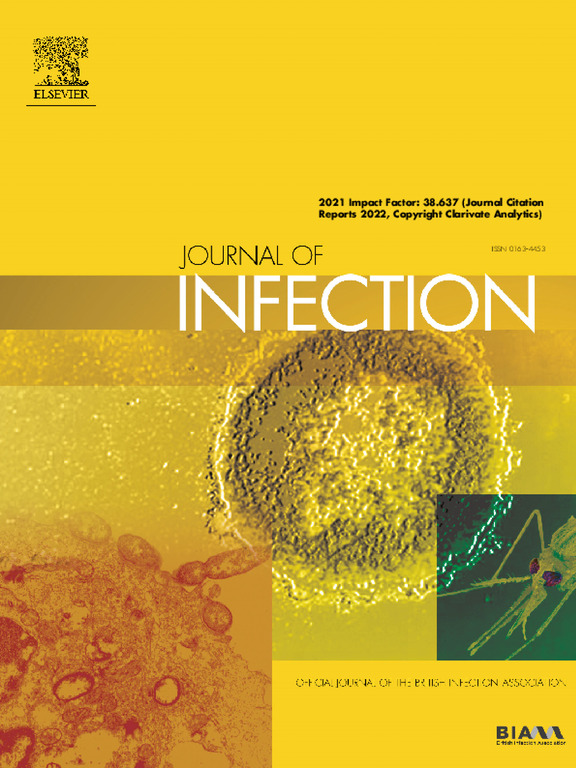金黄色葡萄球菌或大肠杆菌血症后的30天死亡率:一项基准研究
IF 11.9
1区 医学
Q1 INFECTIOUS DISEASES
引用次数: 0
摘要
目的:比较以色列急性护理医院、以色列和已发表的荟萃分析估计以及以色列和英国由金黄色葡萄球菌或大肠杆菌引起的菌血症后的病死率(CFR)。方法:该流行病学评估使用了来自以色列和英国的全国数据和荟萃分析。我们纳入了2018-2019年所有金黄色葡萄球菌或大肠杆菌菌血症患者。结果是病死率,定义为30天全因死亡率。结果:以色列各医院的粗CFR差异很大,甲氧西林敏感金黄色葡萄球菌(MSSA)为20.0% ~ 45.0%,甲氧西林耐药(MRSA)为22.9% ~ 66.7%,第三代头孢菌素敏感(3GC-S)大肠杆菌为0.0% ~ 21.8%,第三代头孢菌素耐药(3GC-R)大肠杆菌为17.5% ~ 36.6%。以色列经年龄调整的CFRs显著高于英国:MSSA的风险差异为6.4% (95% CI: 5.2%-7.6%), MRSA的风险差异为13.0% (95% CI: 7.5%-18.5%), 3GC-S大肠杆菌的风险差异为1.4% (95% CI: 0.7%-2.0%), 3GC-R大肠杆菌的风险差异为8.8% (95% CI: 6.9%-10.8%)。以色列的CFRs高于荟萃分析,尽管大肠杆菌的置信区间重叠。结论:三个决定因素可以解释菌血症后CFR升高:宿主因素、细菌因素以及治疗的及时性和适宜性。后者是可修改的。对标可以指导改进工作,从而挽救生命。本文章由计算机程序翻译,如有差异,请以英文原文为准。
A benchmarking study of thirty-day mortality following Staphylococcus aureus or Escherichia coli bacteremia
Objectives
To compare the case-fatality rate (CFR) following bacteremia caused by Staphylococcus aureus or Escherichia coli between acute care hospitals in Israel, Israel and estimates from published meta-analyses, and Israel and England.
Methods
This epidemiologic assessment used nationwide data from Israel and England and meta-analyses. We included all patients with S. aureus or E. coli bacteremia in 2018–2019. The outcome was the case-fatality rate, defined as 30-day all-cause mortality.
Results
Crude CFR varied widely between Israeli hospitals, ranging from 20.0% to 45.0% for methicillin-susceptible S. aureus (MSSA), 22.9–66.7% for methicillin-resistant S. aureus (MRSA), 0.0–21.8% for third-generation cephalosporin-susceptible (3GC-S) E. coli, and 17.5–36.6% for third-generation cephalosporin-resistant (3GC-R) E. coli. Age-adjusted CFRs in Israel were significantly higher than in England: risk differences were 6.4% (95% CI: 5.2–7.6%) for MSSA, 13.0% (95% CI: 7.5%–18.5%) for MRSA, 1.4% (95% CI: 0.7–2.0%) for 3GC-S E. coli, and 8.8% (95% CI: 6.9–10.8%) for 3GC-R E. coli. CFRs in Israel were higher than in meta-analyses, although confidence intervals overlapped for E. coli.
Conclusions
Three determinants could explain elevated CFR following bacteremia: host factors, bacterial factors, and timeliness and appropriateness of treatment. The latter are modifiable. Benchmarking could direct improvement efforts that save lives.
求助全文
通过发布文献求助,成功后即可免费获取论文全文。
去求助
来源期刊

Journal of Infection
医学-传染病学
CiteScore
45.90
自引率
3.20%
发文量
475
审稿时长
16 days
期刊介绍:
The Journal of Infection publishes original papers on all aspects of infection - clinical, microbiological and epidemiological. The Journal seeks to bring together knowledge from all specialties involved in infection research and clinical practice, and present the best work in the ever-changing field of infection.
Each issue brings you Editorials that describe current or controversial topics of interest, high quality Reviews to keep you in touch with the latest developments in specific fields of interest, an Epidemiology section reporting studies in the hospital and the general community, and a lively correspondence section.
 求助内容:
求助内容: 应助结果提醒方式:
应助结果提醒方式:


